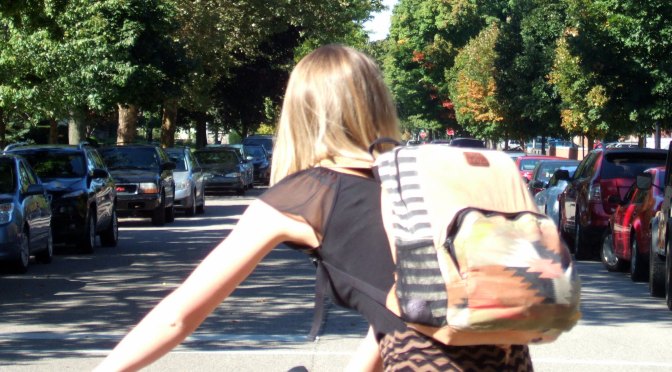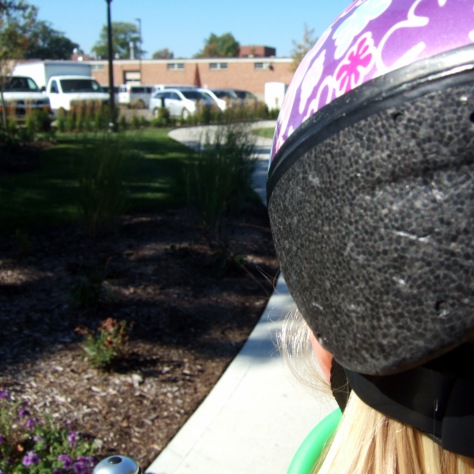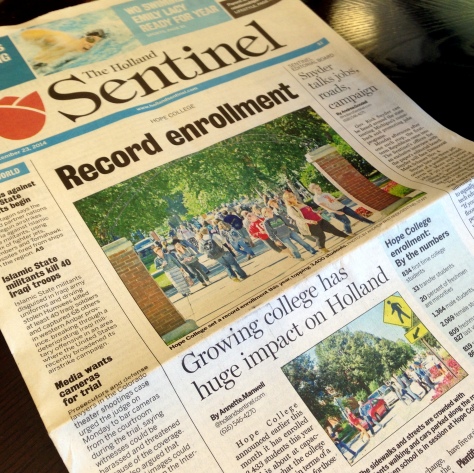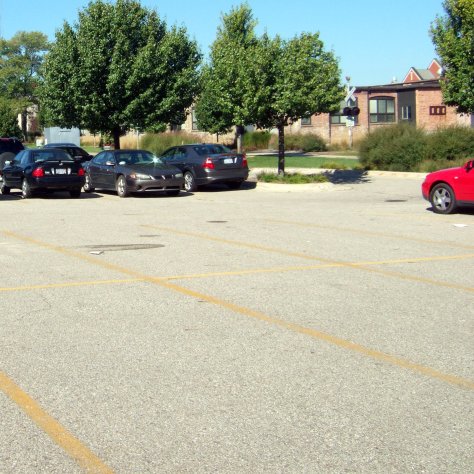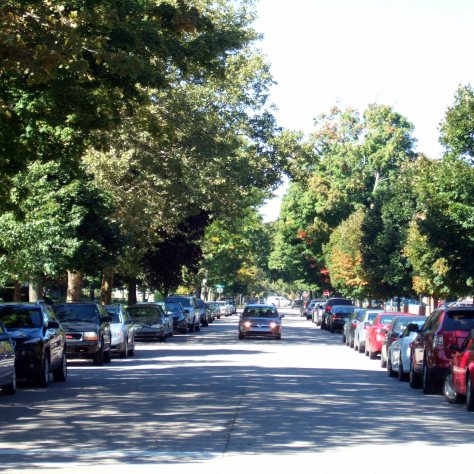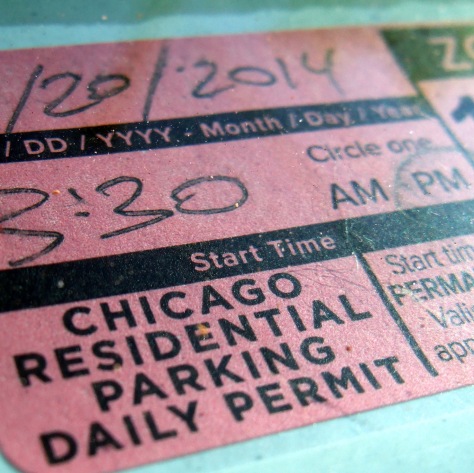For a few more precious weeks, she sits in front of me as I ride her home from school. The bleary-eyed days of babies screaming the house awake two hours before dawn are being replaced by mornings I consider serving the kindergartener a cup of coffee before school.
Today, though, this last baby chatters about the “app-ohs” she had for snack, asks if dragons are allowed in our house, and repeatedly demands chicken nuggets for lunch.
We cut through Hope College’s peaceful campus to take advantage of their leafy sidewalks, but a wrong turn this week brought us down one of the streets directly adjacent to the school instead. It was lined with parked cars on either side, and we enjoyed the slow pace of the street, a pace that matched our own. A car pulled out behind us as we rode that street, glided past us as we turned the corner. Two blocks later the driver pulled into a driveway, safely home.
American to the core, the student appeared to have driven five meager blocks. And this is our culture: we drive as a default, as a reflex. We drive because it feels like an indulgent waste of time to spend those precious minutes on a walk. We drive because it’s easy and we’re promised parking on the other end – and sometimes because it freaks us out to cross that one road. Most of us have done this, myself included.
But this student’s journey suggests a set of solutions to the questions our city is facing this season.
Front page in the local paper last Tuesday: Record enrollment at Hope College has huge impact on Holland.
The two big issues are parties and traffic/parking.
The college has and maintains 998 total parking spaces, said Tom Bylsma, Hope College’s chief financial officer and vice president of business. Students must have permits to park and earlier this month, a total of 955 had been sold. It is standard to leave a small cushion of spaces for snow piles in the winter, he said.
“That should be enough,” Bylsma said, adding that historically, about one-third of the students have a vehicle.
The car-lined streets in the Hope College Neighborhood is a concern mentioned numerous times by people who live there.
Homeowners on 12th Street said if there is practice or a game at the soccer stadium, it is near impossible to get in or out of driveways.
Yet Hope officials have not had any formal discussions about a parking structure, Bylsma said, but added they would be open to conversations about it with city leaders.
“We want to be good neighbors,” Bylsma said. “No matter what college or university you go to there will be parking challenges. We feel the parking is sufficient.”
The real challenge is parking behaviors of people, he said. People tend to want to park as close and conveniently as possible to where they want to be “and often people park where they shouldn’t,” he said. “And often times that is what creates the problem.” (Emphasis mine.)
“I see the biggest problem is going to be parking,” City Councilman Wayne Klomparens said Wednesday, adding it was a problem when he went to school there.
Councilman Myron Trethewey suggested allowing parking on only one side of the roads in that neighborhood to help ease congestion.
I rode through campus again today to see how all those parking lots are looking, and I bet you’ve guessed it already:
Tom Bylsma, quoted above, nails it: we want to park as close to our destination as we possibly can, and will only choose otherwise if there is a compelling reason to do so.
In addition to all the dedicated student parking lots, there is free street parking everywhere in the city during daytime hours. Much of this parking is blocks closer to the classroom buildings than the parking lots. The streets by the college are, indeed, lined with cars for much of the day.
Much to the neighbors’ chagrin, there is no disincentive to driving five blocks.
This is actually not a problem that’s difficult on a technical level. It’s been addressed, successfully, in many other places. But it does require us to begin to think a little bit differently about when and how we use our cars in the city. With that said, here are some great options:
Option 1: Meters
This would be a fun experiment. Leave everything precisely the same as it is now, but meter the on-street parking at a reasonable rate (I’ll leave it to the experts to determine what’s reasonable, though parking guru Donald Shoup suggests setting a price that produces 85% occupancy). Given my memories of how far I was willing to walk in college to avoid paying for parking, this might solve whatever problem we have all by itself.
The powerful thing about this option is that it’s revenue-producing. Even though we think of providing street parking as a free service, it’s not. Our streets are built and maintained out of the big bucket of property taxes that we all pay into, so we’re subsidizing all this extra driving and parking as a community (city-wide, not just in this area). Although we could just use the revenue to offset the additional wear-and-tear from the weight of the parked vehicles, this would also be a great opportunity to improve our city’s bikeways as an additional step in solving the parking problem. We’ll talk a little more about that below.
Option 2: Parking districts
Homeowners on the street might not be any too enamored with the idea of meters on their streets, but there’s a tried-and-true workaround here, too – the parking district. The sticker above is still stuck to the windshield of my car from last weekend’s trip to visit my adorable niece (and her wonderful parents) in Chicago. My brother has a resident sticker on his car, and can park anywhere in his neighborhood zone for free. This is a guest pass, which is good for 24 hours and cost them about fifty cents.
(As a side note, maybe someday I’ll tell you guys about how much car ownership costs in Japan. Seven years back, and I still can’t get over how cheap it is here in comparison!)
Option 3: Quality network of bike lanes
Putting a price on parking will deter students who drive five blocks, but presenting a viable alternative to driving is essential for those who live further off-campus. Replacing parking lanes with appropriately-sized bike lanes – ideally, separated from moving traffic – would respect the transportation choices that so many students are already making and be an economic win for the city as a whole, too. I’m hoping to talk about this in more detail in coming weeks, so I’ll leave it there for now.
My friends tell me that the pigtailed toddler in rainbow shoes will be headed off to college before I know it. I hope the city of her choice, the school of her choice, will have set up systems that make active transportation easy. I hope that spending the inordinate amount of money necessary to own and maintain a car will be a choice for her, and not a requirement. I hope that someone has decided to make room for her on the roads if she chooses to travel on two wheels, as she does today. And let’s do the same for our neighbors kids.

